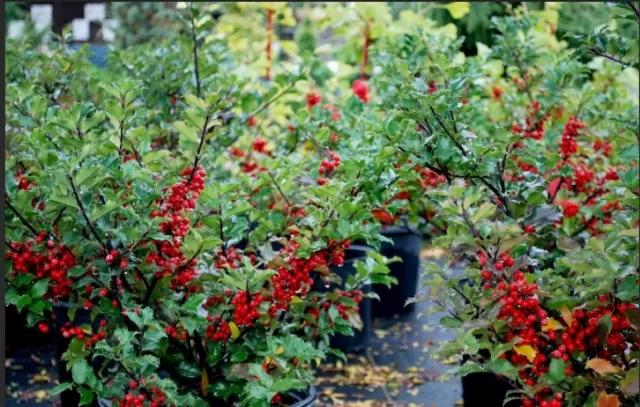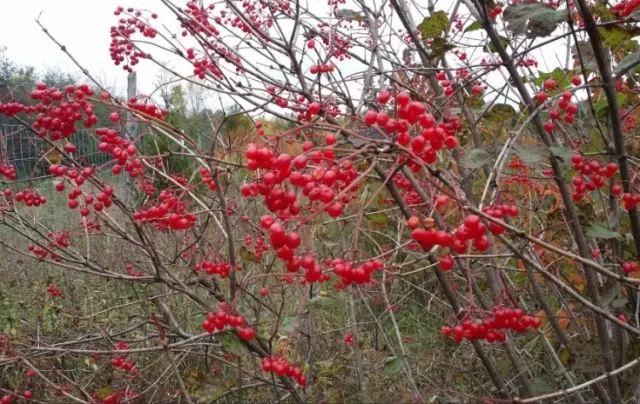Winter Garden Upgrade: Colorful Perennials for Beauty. Winter landscapes often lack vibrant colors, but you can enhance the beauty of your outdoor space and support local wildlife by planting colorful shrubs and trees that also provide food for birds.
These stunning options will add a pop of color to your winter garden while attracting and nourishing hungry birds.When planting these shrubs and trees, consider the specific requirements of your hardiness zone and ensure they are suitable for your climate. Additionally, providing a variety of shrubs and trees that produce berries or other food sources throughout the winter will attract a diverse range of bird species to your garden. Enjoy the visual appeal of these plants while providing nourishment and habitat for local wildlife during the colder months.
Revitalize Your Winter Garden: Transforming Barren Landscapes into Vibrant Winter Wonderlands

When winter arrives and temperatures plunge below freezing, the once-lively landscape fades into a monotonous brown palette.
As the leaves of trees fall, leaving the garden devoid of color, the winter blahs begin to set in. However, fear not! With careful selection of the perfect perennials, you can breathe life into this desolate terrain, turning it into a captivating and colorful oasis.
Moreover, by choosing the right plants, you can provide much-needed nourishment for hungry critters who struggle to find food when the mercury drops.
Imagine a winter garden adorned with bushes teeming with vivid berries and trees boasting dazzling branches.
These resilient performers thrive in cold weather, effortlessly infusing your outdoor space with vitality. Not only will they add a touch of oomph to your garden, but they will also serve as a vital source of sustenance for wildlife during the harsh winter months.
Winterberry (Ilex verticillata): A Burst of Color and Nourishment for Winter Wildlife
Native to various regions of eastern Canada and the United States, the Winterberry, scientifically known as Ilex verticillata, is a prevalent species of holly.
These bushes possess an upright growth habit, forming mounded structures that can reach impressive heights of up to 9 feet. The most captivating feature of the Winterberry is undoubtedly its vibrant red berries, which not only add a striking pop of color to the winter landscape but also serve as a vital source of sustenance for birds that brave the cold season.
In addition to their ornamental appeal, Winterberry hollies contribute significantly to supporting wildlife during winter.
As other food sources become scarce, these bright red berries act as a beacon, attracting various bird species that rely on them for nourishment. By planting Winterberry hollies in your garden, you provide an essential lifeline for our feathered friends, enabling them to survive the harsh winter conditions.
While Winterberry holly thrives in full sun, it is versatile enough to tolerate partial shade as well.
This adaptability makes it a suitable choice for a wide range of garden settings, allowing you to incorporate its captivating beauty into different areas of your outdoor space. So, whether you’re seeking to enhance your winter garden’s visual appeal or contribute to the well-being of local wildlife, the Winterberry holly is an excellent addition to consider.
Blue Holly (Ilex meserveae): A Stunning Evergreen with Autumnal Charms

Contrary to its name, Blue Holly (Ilex meserveae) doesn’t bear blue-hued berries.
Instead, it earns its moniker from the striking blue-green foliage that graces its branches year-round. However, as autumn arrives, this remarkable evergreen surprises us with a delightful transformation.
It adorns itself with bright red berries that serve as a magnet for birds and other small creatures seeking nourishment during the colder months.
When selecting Blue Holly, it is crucial to note that only the female plants produce the coveted fruit.
Therefore, it’s important to choose the right specimen if you wish to enjoy the vibrant display of berries. Providing ample space for growth is also essential, as Blue Holly can spread up to an impressive width of 10 feet, creating a lush and expansive presence in your garden.
Similar to Winterberry, Blue Holly exhibits great adaptability when it comes to lighting conditions.
It thrives in full sun but is also capable of tolerating partial shade. This flexibility allows you to incorporate this captivating evergreen into various areas of your outdoor space, be it as a focal point or as part of a vibrant hedge.
With its captivating blue-green leaves and the promise of vibrant red berries, Blue Holly offers a striking aesthetic appeal and an invaluable food source for wildlife during the fall and winter seasons.
By welcoming this remarkable evergreen into your garden, you not only enhance its visual allure but also contribute to the vitality and well-being of the creatures that depend on its bountiful berries.
Red Twig Dogwood (Cornus alba): A Fiery Display of Winter Beauty
Few shrubs can rival the stunning visual impact of the Red Twig Dogwood (Cornus alba) during the winter months.
These resilient plants boast branches ablaze with a fiery red hue, creating a mesmerizing contrast against the pristine white backdrop of freshly fallen snow. But the captivating display doesn’t end there. In the spring, these remarkable shrubs burst forth with delicate clusters of tiny white blooms, further enhancing their allure.
To ensure that your Red Twig Dogwood maintains its vibrant appearance, it’s recommended to prune it in the spring.
This strategic pruning stimulates new growth, allowing for the emergence of fresh twigs that will exhibit the most vivid colors when winter arrives. By carefully managing the plant’s growth, you can maximize its visual impact and enjoy an even more dazzling winter spectacle.
The Red Twig Dogwood’s adaptability extends beyond its aesthetic appeal.
It is a hardy plant capable of thriving in various conditions, from full sun to partial shade. Whether used as a standalone specimen or as part of a larger landscape design, these resilient shrubs can elevate the visual interest of your garden throughout the year.
Embrace the striking beauty of the Red Twig Dogwood and witness how its fiery branches transform your winter landscape into a scene of unparalleled enchantment.
With its radiant display and the promise of delicate blooms in spring, this remarkable shrub is a testament to the wonders of nature’s ever-changing tapestry.
American Cranberrybush (Viburnum trilobum): Nature\’s Cranberry-Like Delight

Don’t let the name fool you—the American Cranberrybush (Viburnum trilobum) may not be directly related to true cranberries, but it offers a delectable treat that closely resembles their acidic flavor.
This fruit-bearing bush bears clusters of edible berries with a tang reminiscent of cranberries. As spring arrives, the American Cranberrybush dazzles with its captivating flower clusters.
However, as the temperature cools, the berries take center stage, becoming the main attraction of this remarkable plant.
Thriving in colder climates, the American Cranberrybush finds its home in USDA hardiness zones 2 to 7.
Whether you reside in a snowy wonderland or a chilly region, this resilient shrub can add beauty and flavor to your garden. While providing full sun conditions will maximize the berry production, these versatile shrubs also tolerate partial shade, allowing for more flexibility in incorporating them into your outdoor space.
Beyond its aesthetic appeal and edible berries, the American Cranberrybush exhibits a remarkable adaptability to different environments.
Whether planted as a standalone specimen, included in mixed borders, or utilized as a hedge, this versatile shrub adds depth and interest to any landscape.
Savor the delight of the American Cranberrybush as it graces your garden with its showy blooms and vibrant berries.
Embrace its hardy nature and relish the almost cranberry-like flavor it offers. With its ability to thrive in colder climates and its versatility in various light conditions, this exceptional plant is sure to be a standout addition to your outdoor sanctuary.
*The information is for reference only.